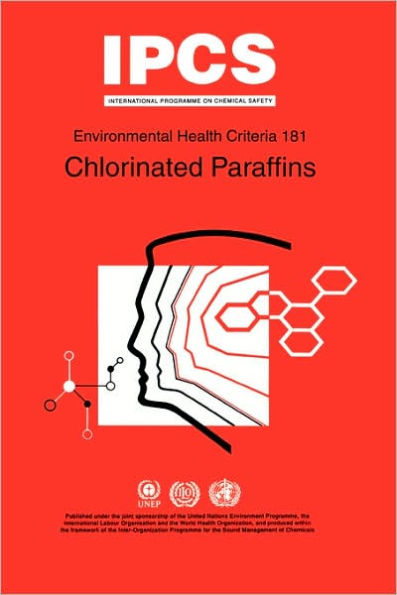Chlorinated Paraffins
Summary Evaluates the risks to human health and the environment posed by exposure to chlorinated paraffins. These complex mixtures are widely used throughout the world as a secondary plasticizer in polyvinyl chloride, as extreme pressure lubricant additives in the metal-working industry, and in fire-retardant and water-repellent fabric treatment. Chlorinated paraffins are also added to paints, coatings, and sealants to improve resistance to water and chemicals. The most extensive section assesses findings from toxicity studies in experimental mammals and in vitro test systems. Studies demonstrate low acute oral toxicity and suggest that acute toxicity by the inhalation and dermal routes is also low. Repeated dose toxicity studies by the oral route consistently show that the liver, kidney and thyroid are the primary targets of toxic action. Long-term carcinogenicity studies in rodents have demonstrated increases in the incidence of hepatic, renal, and thyroid tumours following exposure to a short-chain compound. Following exposure to a long-chain compound, an increased incidence of malignant lymphomas and tumours of the adrenal gland has been observed. In reviewing the limited data on human health effects, the report notes that, despite widespread use of these compounds, no case reports of skin irritation or sensitization have been recorded. This observation is supported by studies of dermal exposure in human volunteers. The report concludes that, when proper personal hygiene and safety procedures are followed, risks to the health of exposed workers should be minimal. Since chlorinated paraffins bioaccumulate and are toxic to environmental organisms, the report recommends that use and disposal of these compounds should be controlled to avoid release to the environment.
1002611901
Chlorinated Paraffins
Summary Evaluates the risks to human health and the environment posed by exposure to chlorinated paraffins. These complex mixtures are widely used throughout the world as a secondary plasticizer in polyvinyl chloride, as extreme pressure lubricant additives in the metal-working industry, and in fire-retardant and water-repellent fabric treatment. Chlorinated paraffins are also added to paints, coatings, and sealants to improve resistance to water and chemicals. The most extensive section assesses findings from toxicity studies in experimental mammals and in vitro test systems. Studies demonstrate low acute oral toxicity and suggest that acute toxicity by the inhalation and dermal routes is also low. Repeated dose toxicity studies by the oral route consistently show that the liver, kidney and thyroid are the primary targets of toxic action. Long-term carcinogenicity studies in rodents have demonstrated increases in the incidence of hepatic, renal, and thyroid tumours following exposure to a short-chain compound. Following exposure to a long-chain compound, an increased incidence of malignant lymphomas and tumours of the adrenal gland has been observed. In reviewing the limited data on human health effects, the report notes that, despite widespread use of these compounds, no case reports of skin irritation or sensitization have been recorded. This observation is supported by studies of dermal exposure in human volunteers. The report concludes that, when proper personal hygiene and safety procedures are followed, risks to the health of exposed workers should be minimal. Since chlorinated paraffins bioaccumulate and are toxic to environmental organisms, the report recommends that use and disposal of these compounds should be controlled to avoid release to the environment.
40.0
In Stock
5
1

Chlorinated Paraffins
184
Chlorinated Paraffins
184Paperback
$40.00
40.0
In Stock

Product Details
| ISBN-13: | 9789241571814 |
|---|---|
| Publisher: | World Health Organization |
| Publication date: | 01/01/1996 |
| Series: | Environmental Health Criteria , #181 |
| Pages: | 184 |
| Product dimensions: | 6.00(w) x 9.00(h) x 0.39(d) |
From the B&N Reads Blog
